

Since COVID-19 and the resulting rise in eCommerce, the pressure on brands to actively seek measurement and data solutions that help assess and benchmark current performance has mounted. With so many eCommerce analytics providers with varying datasets and features, however, it can be hard to determine what’s right for your needs. One factor that’s important to consider is the frequency and cadence of the data each solution offers, as that can ultimately impact its usability once the contract has been signed.
In most cases, analytics providers offer either daily or weekly updated data:
-
Daily updated and reported data is refreshed at a certain time each day, adding on the most recent day’s information to the dataset and making any necessary corrections or adjustments to previous days.
-
Weekly updated and reported data is typically refreshed on the same day of the week, every week, and gives an aggregated overview of every data point for the time period without being able to isolate days individually.
So, in order to decide the option that best meets the needs of your team and organization, it is important to understand exactly what you are receiving with both, the pros and cons, and your tasks to accomplish.
What are the pros and cons of weekly data?
|
Pros |
Cons |
|
|
What are the pros and cons of daily data?
|
Pros |
Cons |
|
|
Real-life scenarios where daily data is crucial
So, the decision between weekly versus daily data really comes down to how you want to apply it. But what do those use cases look like?
Here are a few real but blinded examples of how brands benefit from using daily data:
Pinpointing sales trends and understanding what’s behind them
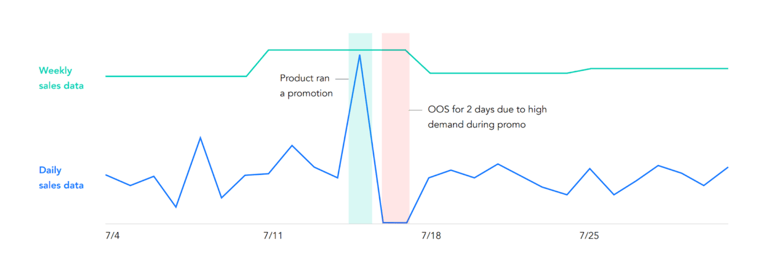
In this example, a brand ran a flash sale that resulted in a product going out of stock. With daily sales data, it is possible to see nuances in the data, such as spiking sales and the immediate dropoff from going out of stock. This level of detail can help you identify trends that are specific to high-volume traffic days, such as Prime Day, Black Friday or any major shopping holiday, and measure the impact they have on inventory and sales.
Staying on top of product availability and inventory levels
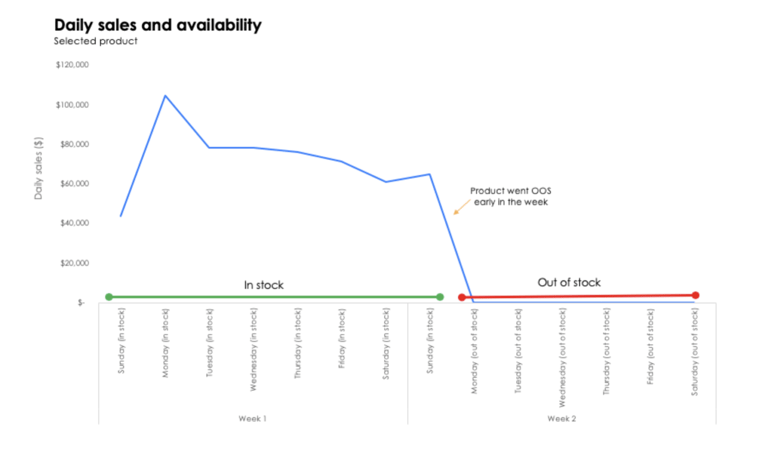
In this scenario, an item went out of stock early in the second week of the time period analyzed. Using daily reporting, the brand was immediately notified of the stock issue, and able to take quick action to replenish supply rather than continue to lose sales for the rest of the week. Since demand often is unpredictable, without daily data, you have a higher potential of losing out on sales due to slowed reaction times.
Enforcing pricing and MAP policies
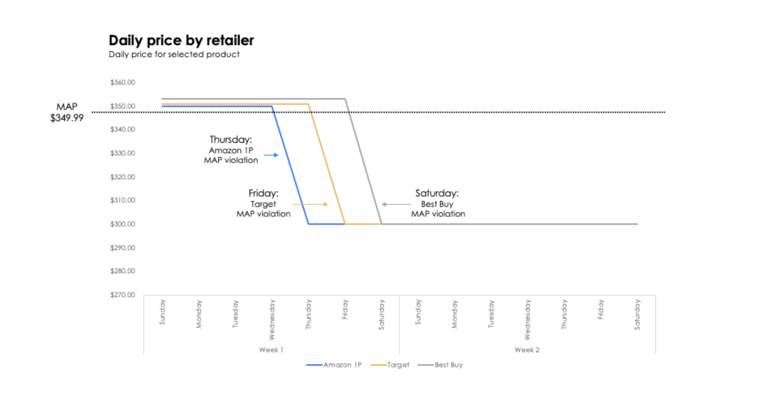
In this example, a MAP violation occurred on Thursday and started a domino effect of retailers lowering their prices below the floor mark. Rather than waiting a week to receive the information in order to rectify it (or missing the violation entirely), the brand was able to receive proof of which retailers were responsible and react the day it happened. When a price drops below the minimum price, this can set off a chain reaction that negatively impacts your brand integrity. With daily round-the-clock pricing detection, you respond quickly with credible proof to send to violators.
Keeping product content strong
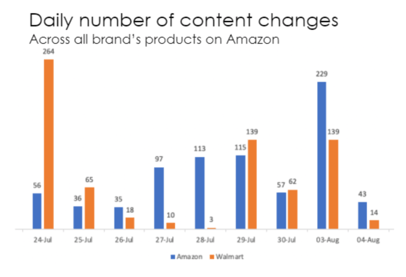
In this example, a popular Toys & Games brand ran an analysis to see how many content changes were occurring daily on Amazon and Walmart.com. With this information, the team was able to know what to expect in terms of content becoming non-compliant, missing or below benchmark standard, and reacting quickly. Daily data allows you to constantly compare actual versus expected content on retailer websites and apply quick fixes before it affects other aspects of your business, like customer conversion or search placement.
Addressing negative reviews
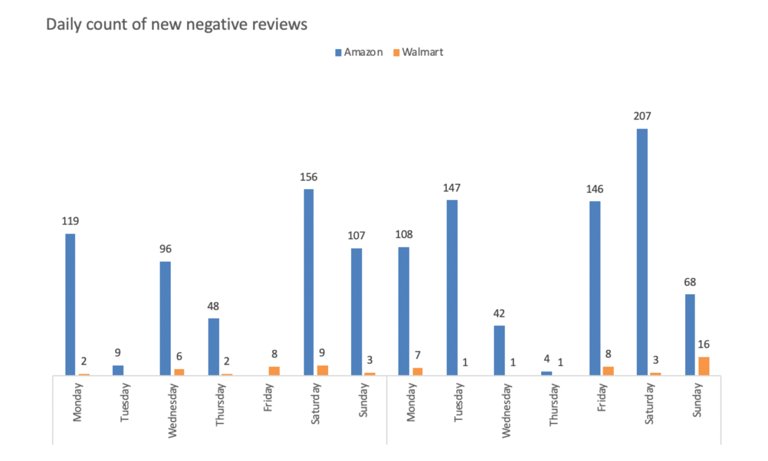
This chart shows the amount of new negative reviews a brand received over the course of two weeks. With daily reporting, the brand was able to dive into each review to understand customer sentiment and respond immediately. This type of daily granularity can provide early warning signals of potential product issues that may need to be addressed. Additionally, some high-risk industries like health, wellness and pharmaceutical often have a required 24-72 hour timeframe to respond to negative reviews, in which case daily data is necessary.
These examples illustrate some reasons you might consider daily data for your eCommerce measurement program. Ultimately though, it depends on your main use cases and how your organization is structured to act on data.
Profitero is one of few solution providers to offer daily data at the item level across the full spectrum of the digital shelf — as well as sales, market share, traffic and conversion measurement for Amazon.
Contact us to learn more about the benefits of daily data and how you can apply it to your business.


























